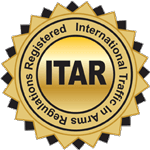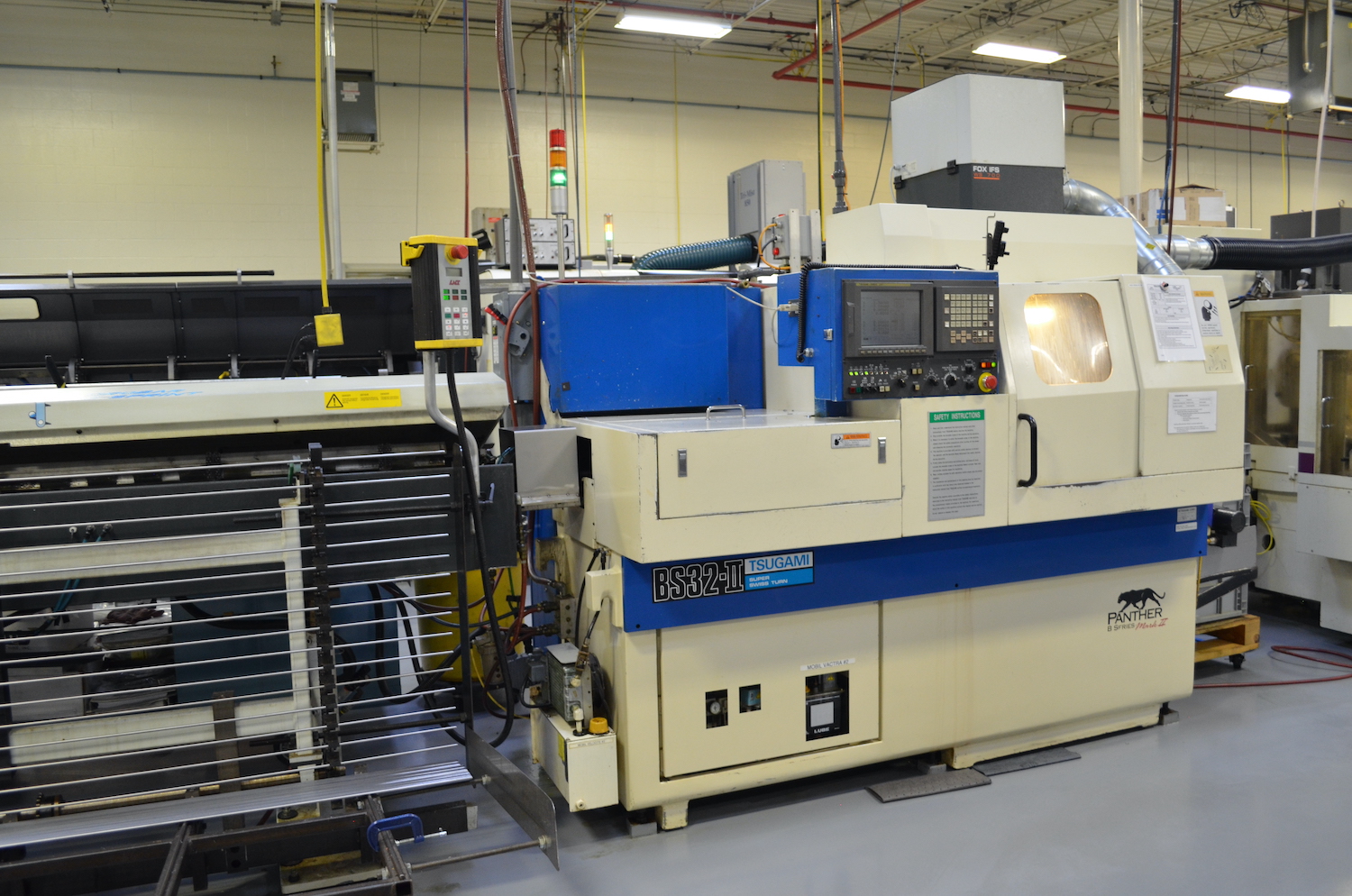Parts made using CNC machines can thus be made quickly and accurately, transforming the production process for components with their automated capabilities. Though widely used, many industries that utilize CNC machining don’t know these processes, applications, and benefits, especially as technology advances. Below, we explain CNC lathe machine operation.
The CNC Lathe Machine: Operational Processes, Applications & Benefits
A lathe can be used for shaping metals, alloys, plastics, or even different types of wood. It’s based on moving unwanted material to shape a workpiece by using a stationary cutting tool around which the workpiece revolves. Various lathes are used for different applications; each specialized for specific techniques or materials. With a CNC lathe machine, parts for other equipment can be made more efficiently, along with a vast array of other items. Regardless of their unique functionalities, the primary task of CNC lathe machines involves holding and rotating a workpiece around a cutting tool.
Operational Processes for CNC Lathe Machines
CNC lathe machine operations are many and varied, while results largely depend on the tools used with the machine. Like its manual forbears, the CNC lathe can cut, deform, sand, shape, and otherwise alter a workpiece by removing material, using special attachments that allow it to precisely make parts for other mechanical equipment. As such, it’s become one of the most versatile industrial tools, essential to many industries, especially those that require components to meet precise tolerances. Though the CNC lathe machine’s operations are mechanical, it’s designed for automated precision machining.
The primary CNC lathe machine operations are:
- Cutting involves separating large amounts of material from a workpiece with a sharp-edged cutting tool.
- Deformation involves physically changing the shape of a workpiece by removing material from it.
- Drilling entails fitting a lathe with a drill bit that presses into the workpiece and digging a circular hole that can support bolts, screws, or other fasteners.
- Facing is a standard CNC lathe machine operation involving cutting the workpiece’s surface with a tool that’s secured on the machine’s mounting system; this tool cuts away uniform amounts of material from the surface of a workpiece.
- Knurling involves using a roller with raised spikes that pierce holes into a workpiece’s surface to make it more attractive through texturing.
- Sanding is used for finishing, where workpieces are rotated against a tool bit attached to a CNC lathe machine, with parts utilizing abrasive material like sandpaper to smooth the surface by removing tiny amounts of material from the surface.
- Turning is when a workpiece “turns” or rotates against a stationary cutting tool, one of the CNC lathe machine’s parts.
Ready to automate your next job?
VIEW OUR EQUIPMENT
CNC Lathe Machine Parts
There are numerous CNC lathe machine parts, each with functions that may be more applicable to one industry or another.
The main CNC lathe machine parts are:
- Carriage: Positioned between the tailstock and headstock, it guides and supports the lathe’s tool during processing as it cuts the workpiece.
- Headstock: Clamped on the left hand side of the bed, it not only holds the mechanism for changing speed but also transmits power to the various CNC lathe machine’s parts, including the bearings that enable the workpiece to rotate around the cutting tool.
- Lead screw and feed rod: While the feed rod acts as a mechanism to transmit power, the lead screw functions to turn threads on the lathe, and, for specific machines without a feed rod, it also serves its part as well.
- Tailstock: Parallel to the headstock and known as a “loose head,” this mobile casting is secured at the end of the lathe and can be used to install clamps that allow the machine to drill center holes supporting lengthier workpieces.
- Vertical beam: An essential CNC lathe machine part that minimizes swarf accumulation, unlike manual lathes with beds.
Other important CNC lathe machine parts include:
- Chuck: The mechanical device used to securely hold workpieces, which is attached at the lathe’s spindle nose with screws; the two types are either 3-jaw or 4-jaw chucks, also known as self-centering or independent chucks.
- Compound rest: designed to support both the cutting tool and the post on which the tool’s positioned, it allows the lathe to turn angles or bore short tapers.
- Cross-slide: Clamped to the carriage, this lathe machine part enables tools to slide to and fro.
- Legs: It’s essential to secure them with foundation bolts, as the legs bear the lathe’s whole weight.
- Main spindle: Featuring a cylindrical shaft, this enables longer workpieces to pass through the lathe.
- Saddle: Found on the lathe, it’s part of the carriage supporting slide movements.
- Tool post: Found on the carriage’s top portion, it holds several holders for tools, along with the cutting tools.
These are the basic parts of a CNC lathe machine. Operationally they are the same, even if they differ in appearance or size.
Lathe Machining Applications
There are numerous applications for a CNC lathe machine. Programming can be done for various machining processes, especially for spherical or cylindrical workpieces.
These applications include:
- CNC Milling: There are many ways in which drilling can be performed utilizing a CNC lathe machine, programming it to perform counter-bore, miniature, through-hole, or other types of drilling.
- CNC Turning: Performed to remove material around the axis or in the circular cutting motion when machining spherical or cylindrical workpieces. It involves using a motorized spindle to mount and rotate the chuck; the cutting tool mounts to the tool post in this CNC lathe machine operation, with the turning set at the control panel and based on CNC programming.
- Surface Finishing: CNC lathe machine programming can assist with dimensional accuracy and stability when finishing product surfaces.
- Feature Formation: CNC lathe machine operations like forming circular grooves can be achieved, with features like filets, grooves, notches, and slits also achievable when the surface stays spherical or cylindrical.
These applications can be used to fabricate a wide array of products made with a CNC lathe machine. Parts manufacturing is one of the more popular applications, particularly for precision components that require tight tolerances. Just a few CNC lathe machined parts include:
- Conical shafts
- Discs
- Gaskets
- Gears
- Rods
- Shafts
These are simply examples of what can be achieved with a CNC lathe machine. Operationally, they are some of the most critical devices used across industries.
Benefits of CNC Lathe Machining
While traditional lathe machines provide certain advantages, CNC lathes offer even more benefits, no longer requiring an operator to do the machining work. Since it’s fully automated, CNC lathe machining reduces production time, which enables tool changes, tool post adjustments, and other changes during production to be done much quicker. The process generates less scrap as well, saving on material costs without affecting the quality of the finished product. As precision and accuracy are perhaps the most recognizable benefits of using a CNC lathe machine, operationally, it makes sense to adopt the process when machining parts requiring exact tolerances and dimensional stability.
Ready to talk about your next project?
CONTACT US TODAY
Staub CNC Lathe Machining & “Lights-Out” Manufacturing
Staub Inc. uses the Tsugami BS32 CNC Lathe machine, programming it for their automated manufacturing processes. The company introduced “lights-out manufacturing” in the early 1980s to modernize our production lines to make them more efficient and heighten productivity. Staub began by adding bar feeders to lathes to enable them to run without human supervision for a few hours after all the employees left work. The added productivity resulting from this had our company look even more deeply into how to expand automation in their CNC machining operations further.
Staub continues to use automation to augment CNC lathe machine operations. Employing a robot to remove finished parts from the lathe, these components are washed, dried and analyzed with a laser profiler. Should the laser profiler measure parts that don’t meet specifications twice in a row, it signals the CNC lathe machine. Programming informs the CNC machine to stop without human intervention until the issue can be resolved.
To learn more about Staub’s CNC lathe machine operation expertise and which lathe may best suit your specific project, we invite you to contact us today.



